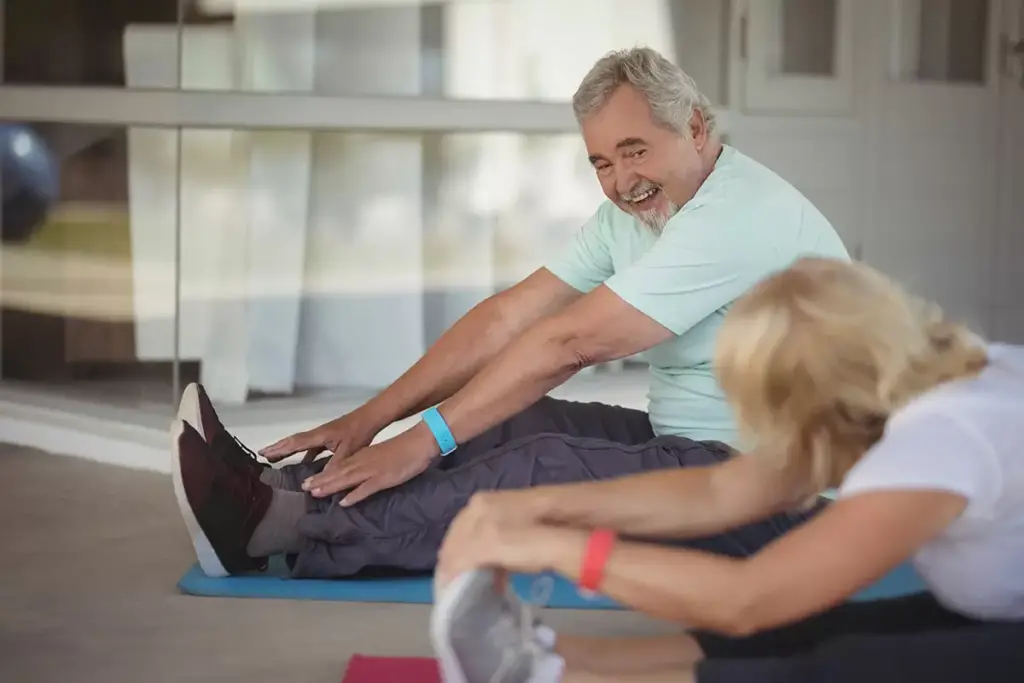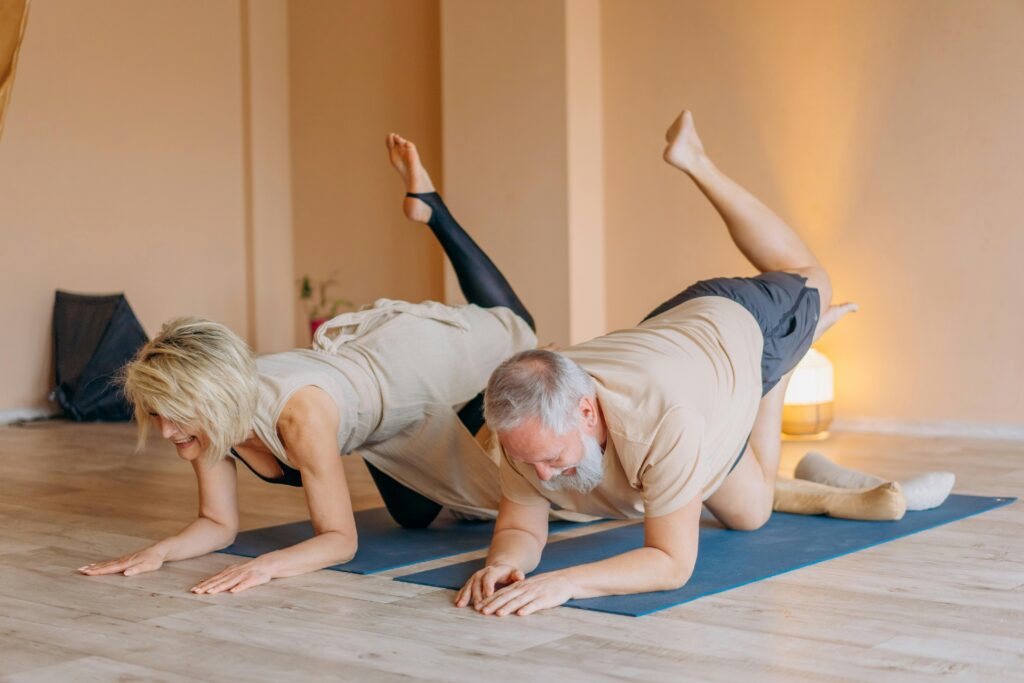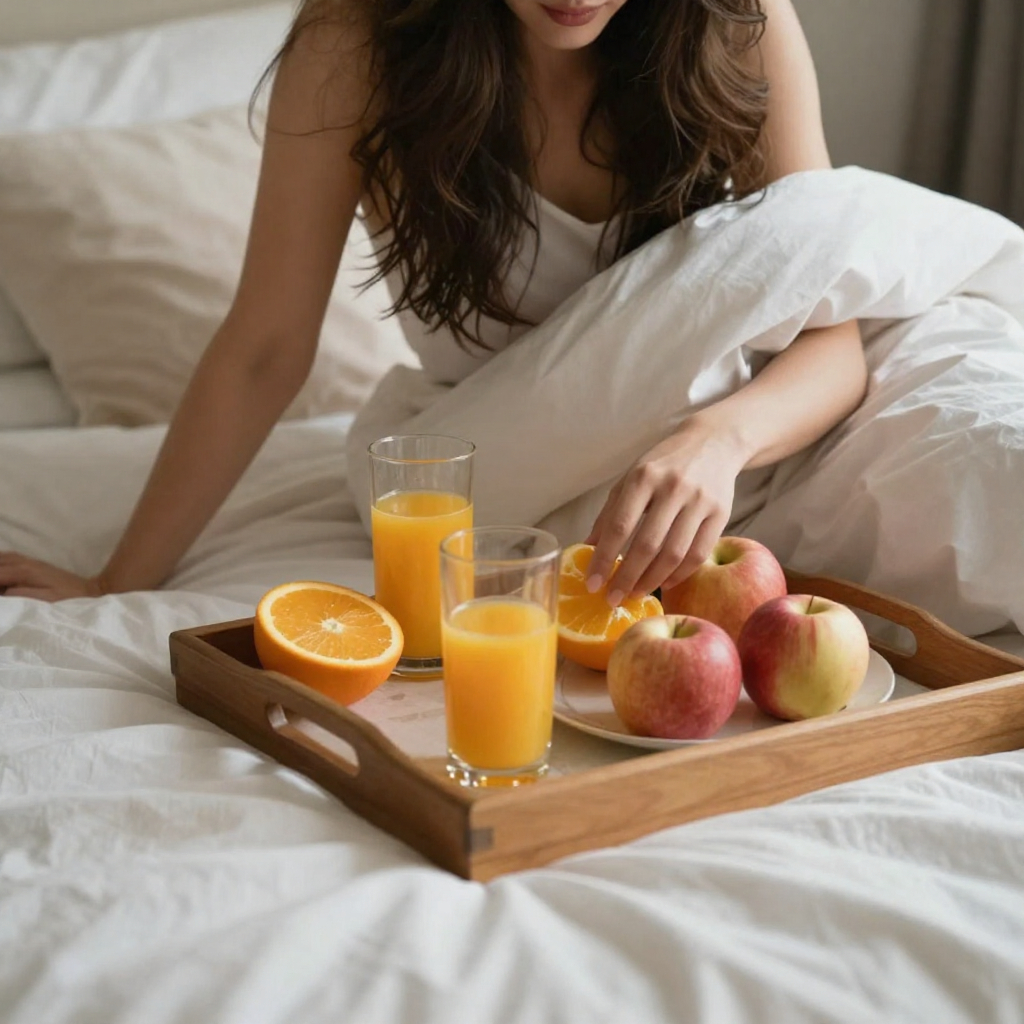Introduction | Staying Active as You Age
Aging is inevitable, but it doesn’t mean sacrificing mobility, independence, or a pain-free lifestyle. Staying active as you grow older is essential for maintaining physical health, mental sharpness, and overall quality of life. Yet, with aging comes challenges such as joint stiffness, muscle tightness, and a higher risk of injuries, making routine activities seem daunting.
Stretching plays a pivotal role in supporting senior health by enhancing flexibility, improving balance, and reducing discomfort from common conditions like arthritis or joint pain. Moreover, it helps maintain muscle elasticity and joint range of motion, which are crucial for performing daily tasks like walking, bending, or lifting objects.
For seniors, stretching is not just a physical activity; it’s a pathway to greater independence and confidence. Beyond the physical benefits, stretching also promotes relaxation, reduces stress, and fosters a sense of well-being, contributing to a more fulfilling and enjoyable lifestyle.
In this blog, we’ll delve into how stretching can keep seniors active and can specifically benefit seniors, support active aging, and combat joint pain. You’ll learn practical tips for incorporating stretches into your routine, understand the science behind its benefits, and gain insight into why stretching is a cornerstone of healthy aging.
The Importance of Stretching for Seniors
As we age, natural physiological changes occur in our muscles and joints, including a gradual loss of elasticity and a decrease in joint lubrication. These changes often lead to stiffness, reduced mobility, and an increased risk of falls or injuries. Stretching, however, offers a simple and effective way to counteract these effects, making it an essential component of senior wellness.
Stretching improves flexibility and enhances the range of motion, which are critical for performing everyday activities like reaching, bending, and walking. It also promotes joint health by maintaining cartilage integrity and reducing wear and tear. Improved circulation from stretching delivers oxygen-rich blood to muscles and tissues, supporting recovery and overall vitality.
For seniors, the benefits of stretching extend beyond physical fitness. Regular stretching helps alleviate chronic joint pain, especially in areas prone to stiffness like the hips, knees, and lower back. It also relieves muscle tension and improves posture, reducing strain on the body and preventing discomfort during daily tasks.
The ability to move comfortably and confidently can empower seniors to engage in social activities, perform household chores, and enjoy hobbies without relying heavily on assistance. Even dedicating just 10–15 minutes daily to targeted stretches can make a remarkable difference in mobility, strength, and overall quality of life.
Incorporating stretching into a daily routine not only enhances physical well-being but also fosters a sense of relaxation and mental clarity, contributing to a more balanced and fulfilling lifestyle. For seniors aiming to stay active and pain-free, stretching is a cornerstone of long-term health and independence.
What are the Key Benefits of Stretching for Seniors?
- Improved Flexibility and Mobility
Stretching helps lengthen muscles and improve joint range of motion. It is particularly important for seniors, as it makes daily activities like bending, walking, and reaching easier and safer. - Joint Pain Relief
Regular stretching alleviates stiffness and promotes better lubrication of joints, reducing the discomfort associated with arthritis or other chronic conditions. - Enhanced Circulation
Stretching encourages better blood flow, which is crucial for muscle health and recovery. Improved circulation also reduces swelling and inflammation in joints. - Fall Prevention
Stretching improves balance and coordination, key factors in reducing the risk of falls, and is a major concern for seniors. - Mental and Emotional Benefits
Stretching provides a calming effect, relieving stress and boosting mood. This comprehensive benefit enhances both mental and physical well-being.

What are the Best Stretching Techniques for Seniors?
Not all stretches are created equal, especially for older grown-ups. The following techniques are safe and effective:
- Dynamic Stretching
- Best for warming up muscles before activity.
- Examples: Arm circles, leg swings, or gentle torso twists.
- Static Stretching
- Involves holding a position for 15-30 seconds.
- Examples: Seated hamstring stretches and standing quadriceps stretches.
- Chair Stretches
- Ideal for those with limited mobility or balance concerns.
- Examples: Seated spinal twists, ankle rolls, or shoulder stretches.
- Yoga and Tai Chi-Inspired Stretches
- Combines gentle stretching with mindful breathing.
- Examples: Cat-Cow pose, child’s pose, or standing tree pose.
Also Read: Dynamic vs Static Stretching | Which Fits Your Fitness Goals?
Top 5 Safe Stretching Tips for Seniors
To maximize the benefits of stretching, seniors should follow these essential guidelines:
- Warm Up First
Stretching cold muscles can lead to injury. Start with light walking or arm movements to get blood flowing. - Go Slow and Steady
Avoid bouncing or forcing the body into uncomfortable positions. Stretch until you feel a gentle pull, not pain. - Focus on Major Muscle Groups
Pay attention to areas prone to stiffness, such as the back, hips, shoulders, and legs. - Incorporate Breathing
Deep, steady breaths enhance the relaxation and effectiveness of stretches. - Stay Consistent
Regular practice yields the best results. Aim for at least 10-15 minutes of stretching daily.
Sample Stretching Routine for Seniors
Here’s a simple, beginner-friendly routine that seniors can follow:
- Neck Stretch
- Sit comfortably. Tilt your head to one side, holding for 15 seconds. Repeat on the other side.
- Seated Spinal Twist
- Sit on a chair. Twist your torso to the right, placing your left hand on the outside of your right thigh. Hold for 20 seconds and switch sides.
- Hamstring Stretch
- Sit on the edge of a chair. Extend one leg straight out with your heel on the floor. Lean forward slightly to feel a stretch. Hold for 20 seconds per leg.
- Cat-Cow Stretch
- On all fours, alternate between arching your back (cat) and lowering your belly (cow). Perform 5-10 gentle repetitions.
- Standing Calf Stretch
- Place your hands on a wall. Step one foot back, keeping it straight. Lean forward until you feel a stretch in your calf. Switch sides after 15 seconds.

Common Myths About Stretching for Seniors That You Should Know
Despite its simplicity, stretching is surrounded by misconceptions:
- “It’s Only for Athletes”
Truth: Stretching benefits everyone, regardless of activity level. - “It’s Too Late to Start”
Truth: Stretching is effective at any age. Seniors can start gently and progress over time. - “Stretching Takes Too Much Time”
Truth: A few minutes daily can yield significant benefits.
Stretching for Chronic Conditions
Seniors with chronic conditions like arthritis, osteoporosis, or sciatica can still benefit from stretching. However, they should:
- Consult a healthcare professional before starting.
- Focus on low-impact, gentle stretches.
- Avoid positions that cause discomfort or strain.
Also Read: Why Mobility Training Is Becoming the New Yoga in 2025
The Psychological Impact of Stretching
Stretching provides not only physical benefits but also significant psychological advantages, particularly for seniors. Engaging in regular stretching exercises can help reduce stress, enhance mood, and contribute to an overall sense of well-being. For many, the act of stretching becomes a mindful moment and a time to focus on breathing, movement, and connection to the body, which helps create a calming, meditative experience.
Research suggests that stretching encourages the release of endorphins, the body’s natural mood elevators, promoting feelings of relaxation and happiness. Seniors who incorporate stretching into their routine often report reduced anxiety levels and a more positive outlook on daily life. This can be particularly beneficial for those experiencing age-related stressors or isolation.
Moreover, stretching improves sleep quality, another factor closely linked to mental health. Regular, gentle stretches before bedtime help relax tense muscles, signaling the body to wind down and prepare for restful sleep. The restorative effects of better sleep, in turn, further enhance mood, cognitive function, and emotional resilience.

Real Stories, Real Relief | How Stretching Transformed Senior Lives
Shared with the Active Health Sport Team
1. Lisa Adam (Age 68) – Reclaiming Freedom Through Daily Stretching
Lisa Adam, a retired librarian from Asheville, North Carolina, had struggled with lower back pain and stiff joints for nearly a decade. “I used to avoid even simple activities like gardening or walking the dog,” she shared. After her daughter introduced her to a beginner’s stretching routine featured on Active Health Sport, Lisa committed to a gentle 10-minute daily regimen.
Within three months, she noticed less stiffness and better balance. “I can now bend without pain, and my posture has improved. I feel ten years younger,” Lisa told our team with a smile. Her journey highlights how consistency, even with simple stretches, can lead to profound results.
2. John Kaster (Age 72) – Staying Active to Keep Up with the Grandkids
John Kaster, a retired mechanic from Denver, Colorado, found himself slowing down in his early 70s. “My knees were giving me trouble, and I felt like I was losing mobility,” he said. After reading about static and dynamic stretching techniques on Active Health Sport, John added them to his morning routine. Combined with light walking, he gradually regained flexibility and strength. Now, he spends weekends hiking light trails with his grandsons.
“Stretching gave me back the energy I thought I lost forever,” he proudly shared. John’s story proves that with small efforts, seniors can maintain an active, fulfilling lifestyle.
3. Mr. Steve Alex (Age 76) – From Stiffness to Strength
Steve Alex, a former high school coach in Austin, Texas, always believed in physical fitness. But after retiring, his movement became limited, and he began feeling disconnected from his active past. “I was stiff, especially in the mornings, and found it hard to even get out of bed some days,” Steve admitted. After consulting his physician and discovering our stretching guide tailored for seniors, he began following a personalized routine focusing on hip and shoulder mobility. Six months in, Steve reports reduced pain, better sleep, and renewed motivation.
“Stretching has brought me peace of mind and control over my body again,” he said.
Final Thoughts | Stretch Your Way to an Active, Pain-Free Life
Stretching is a powerful, accessible tool for seniors to maintain mobility, reduce joint pain, and support overall health. By incorporating regular stretching into their lives, seniors can improve flexibility, enhance circulation, and boost their quality of life.
At Active Health Sport, we’re dedicated to helping seniors stay active and vibrant. Start small, stay consistent, and embrace the transformative benefits of stretching. Whether you’re seeking pain relief or simply want to stay independent longer, stretching can help you achieve your goals.
That’s all from today, folks! For more expert advice, tips, and wellness insights, stay connected with us!
You might also like…
- Active Recovery for CrossFitters: Walking & Mobility Explained
 CrossFit pushes athletes to their physical limits, lifting heavy, sprinting, jumping, and performing high-intensity functional movements. While the intensity delivers impressive gains, it also places tremendous stress on muscles,… Read more: Active Recovery for CrossFitters: Walking & Mobility Explained
CrossFit pushes athletes to their physical limits, lifting heavy, sprinting, jumping, and performing high-intensity functional movements. While the intensity delivers impressive gains, it also places tremendous stress on muscles,… Read more: Active Recovery for CrossFitters: Walking & Mobility Explained - How Walking and Stretching Boost CrossFit Recovery (Duo)
 CrossFit recovery, athletes often chase intensity, heavy lifts, quick transitions, and heart-racing WODs (Workouts of the Day). Yet, the key to consistent progress isn’t just in the effort you… Read more: How Walking and Stretching Boost CrossFit Recovery (Duo)
CrossFit recovery, athletes often chase intensity, heavy lifts, quick transitions, and heart-racing WODs (Workouts of the Day). Yet, the key to consistent progress isn’t just in the effort you… Read more: How Walking and Stretching Boost CrossFit Recovery (Duo) - How Nutrition Impacts Sleep: Foods That Help (and Hurt) Your Night’s Rest
 You Are What – and When – You Eat We often think of sleep as a nighttime habit, but the truth is that good sleep begins with what you… Read more: How Nutrition Impacts Sleep: Foods That Help (and Hurt) Your Night’s Rest
You Are What – and When – You Eat We often think of sleep as a nighttime habit, but the truth is that good sleep begins with what you… Read more: How Nutrition Impacts Sleep: Foods That Help (and Hurt) Your Night’s Rest

Kait Amazra is the founder and lead writer of Active Health Sport. With over 25 years of experience in health, fitness, and wellness education, Kait combines professional expertise with a passion for helping people live stronger, healthier, and more balanced lives.
As a licensed health and fitness professional, Kait has worked alongside industry experts to deliver evidence-based insights on physical activity, nutrition, recovery, and holistic well-being. Through Active Health Sport, Kait’s mission is to make trusted, practical, and science-backed health information accessible to everyone, from beginners building new habits to athletes seeking peak performance.


Thanks for sharing. I read many of your blog posts, cool, your blog is very good.
Thank your for your comment, folks!